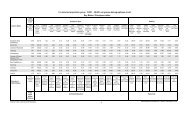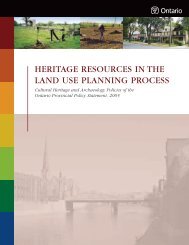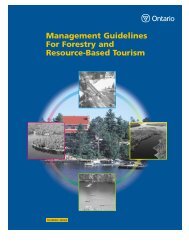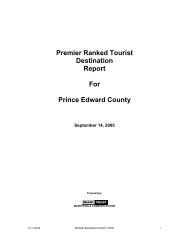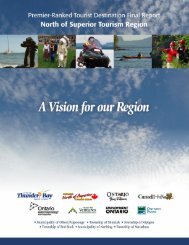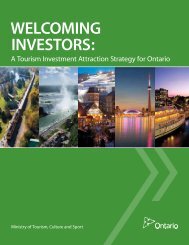Factors Influencing Visitor's Choices of Urban Destinations in North ...
Factors Influencing Visitor's Choices of Urban Destinations in North ...
Factors Influencing Visitor's Choices of Urban Destinations in North ...
Create successful ePaper yourself
Turn your PDF publications into a flip-book with our unique Google optimized e-Paper software.
expla<strong>in</strong> city visitations. Consequently, Global Insight focused on a series <strong>of</strong> models thatemploy several attraction count methodologies. It was gratify<strong>in</strong>g that all three measures<strong>of</strong> attraction count yielded generally consistent results.Number <strong>of</strong> AttractionsThe first type <strong>of</strong> attraction count was a simple measure <strong>of</strong> the number <strong>of</strong> attractions:Visitors city = F (# <strong>of</strong> Attractions city ) (1)This specification postulates a direct relationship between attractions and the number <strong>of</strong>visits. As the number <strong>of</strong> tourist attractions <strong>in</strong>creases, the number <strong>of</strong> visits will also<strong>in</strong>crease. This formula was used to estimate an <strong>in</strong>dividual relationship between touristvisits and each attraction category, sub-category, and types <strong>of</strong> attractions us<strong>in</strong>g theattractions matrix.Normalized AttractionsThe second type <strong>of</strong> attraction count normalized the attraction count by city population <strong>in</strong>order to reduce the <strong>in</strong>fluence <strong>of</strong> a city’s size or population <strong>in</strong> determ<strong>in</strong><strong>in</strong>g visitor counts:Visitors city = F (# <strong>of</strong> Attractions city / Population city ) (2)The count <strong>of</strong> attractions is <strong>of</strong>ten affected by the population size <strong>of</strong> the MSA or CMA. Forexample, the total count <strong>of</strong> attractions <strong>in</strong> New York is close to 300 and the populationbase is about 9.5 million, while the attractions count <strong>in</strong> Edmonton is 60 with thepopulation size close to 1 million.To correct for the population bias, the first equation was normalized by the populationsize. In the new equation, there is a direct relationship between the attractions count percapita and the number <strong>of</strong> visits. Therefore, as the number <strong>of</strong> attractions per capita<strong>in</strong>creases, the number <strong>of</strong> visits will also <strong>in</strong>crease.Normalized Share <strong>of</strong> AttractionsThe third type <strong>of</strong> attraction count measures shares <strong>of</strong> both visitors and normalizedattractions:Visitors city / Visitors NA = F ( # <strong>of</strong> Attractions city / # <strong>of</strong> Attractions NA ) (3)(Population city / Population NA )This formula is a location quotient that measures the percentage <strong>of</strong> a total attraction count<strong>in</strong> a particular city compared to the <strong>North</strong> American (NA) total count <strong>of</strong> attractionsdivided by the percentage <strong>of</strong> total population <strong>in</strong> this city compared to the total <strong>North</strong>American population. It is important to note that the left-hand side <strong>of</strong> this equation isslightly different from two previous notations. This time the left-hand side measures thenumber <strong>of</strong> visits to a particular city compared to the total number <strong>of</strong> visits to <strong>North</strong>America.This measure is a ratio. If the value <strong>of</strong> this ratio is greater than one, this shows that aparticular city has a greater share <strong>of</strong> attractions than the <strong>North</strong> American average, while a16


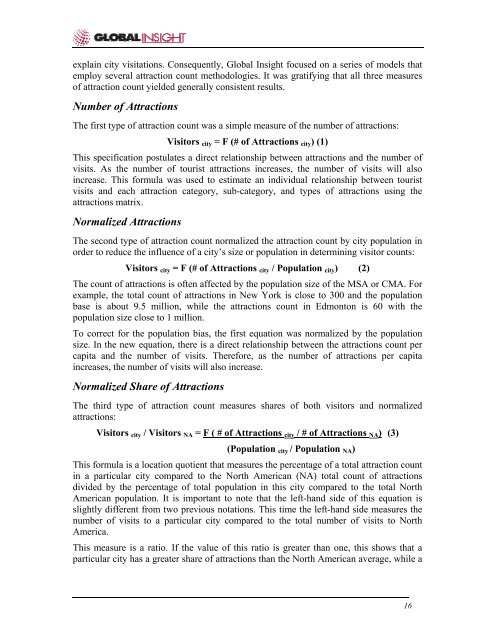
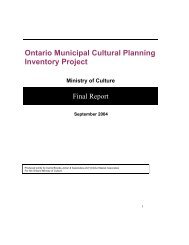
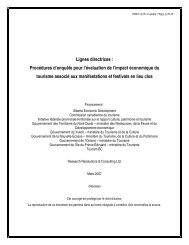
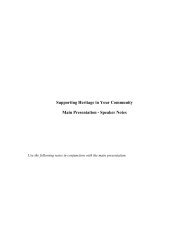
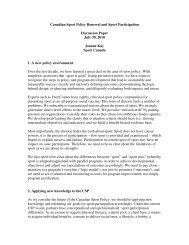
![THIS AGREEMENT made this [date], between [name of owner] (the ...](https://img.yumpu.com/49827605/1/158x260/this-agreement-made-this-date-between-name-of-owner-the-.jpg?quality=85)

